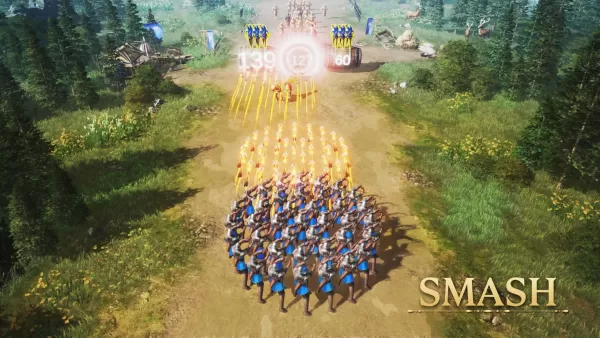Ubisoft has once again activated the Animus, this time transporting players to Japan’s Sengoku Period with Assassin’s Creed Shadows. The game introduces historical figures like Fujibayashi Nagato, Akechi Mitsuhide, and Yasuke—the African samurai who served Oda Nobunaga. As with previous titles in the series, these characters are intricately woven into a narrative that blends historical facts with fictional elements, crafting a tale filled with revenge, betrayal, and murder. While Yasuke's quest to gather enough XP to wield a gold-tier weapon adds a playful twist, it highlights the series' characteristic blend of history and fiction.
Assassin’s Creed is renowned for its historical fiction, using historical gaps to weave a science fiction conspiracy about a secret society aiming to dominate the world using the powers of a pre-human civilization. Ubisoft's open-world environments are rooted in extensive research, yet it's crucial to remember these games are not history lessons but rather creatively altered narratives designed to enhance the storytelling experience.
Here are ten notable instances where Assassin’s Creed has creatively reinterpreted historical events:
The Assassins vs Templars War
 Let's address the most fundamental deviation first: there is no historical evidence of a war between the Order of Assassins and the Knights Templar. This conflict is purely fictional, drawing inspiration from unfounded conspiracy theories about the Templars. Both organizations existed for roughly 200 years, from 1090 AD for the Assassins and 1118 for the Templars, but there is no record of ideological opposition or sustained conflict between them outside of their involvement in the Crusades.
Let's address the most fundamental deviation first: there is no historical evidence of a war between the Order of Assassins and the Knights Templar. This conflict is purely fictional, drawing inspiration from unfounded conspiracy theories about the Templars. Both organizations existed for roughly 200 years, from 1090 AD for the Assassins and 1118 for the Templars, but there is no record of ideological opposition or sustained conflict between them outside of their involvement in the Crusades.
The Borgias and their Superpowered Pope
 Assassin’s Creed 2 and its sequel, Brotherhood, center on Ezio's struggle against the Borgia family. In the games, Cardinal Rodrigo Borgia, later Pope Alexander VI, is depicted as the Templar Grand Master. This narrative is entirely fictional, as the Templars did not exist during the late 1400s. The games also exaggerate the Borgias' villainy, portraying Rodrigo's son Cesare as an incestuous psychopath, despite historical records suggesting otherwise.
Assassin’s Creed 2 and its sequel, Brotherhood, center on Ezio's struggle against the Borgia family. In the games, Cardinal Rodrigo Borgia, later Pope Alexander VI, is depicted as the Templar Grand Master. This narrative is entirely fictional, as the Templars did not exist during the late 1400s. The games also exaggerate the Borgias' villainy, portraying Rodrigo's son Cesare as an incestuous psychopath, despite historical records suggesting otherwise.
Machiavelli, Enemy of the Borgias
 In Assassin’s Creed 2 and Brotherhood, Niccolò Machiavelli is shown as Ezio's ally and leader of the Italian Assassins. Historically, however, Machiavelli's philosophies aligned more with strong authority, contradicting the Assassin's Creed. Moreover, he had a positive view of the Borgias, serving as a diplomat under Cesare and admiring his rule.
In Assassin’s Creed 2 and Brotherhood, Niccolò Machiavelli is shown as Ezio's ally and leader of the Italian Assassins. Historically, however, Machiavelli's philosophies aligned more with strong authority, contradicting the Assassin's Creed. Moreover, he had a positive view of the Borgias, serving as a diplomat under Cesare and admiring his rule.
The Incredible Leonardo da Vinci and his Flying Machine
 Assassin’s Creed 2 features a strong depiction of Leonardo da Vinci as a charismatic genius. However, the game alters his timeline, moving him from Florence to Venice in 1481 to coincide with Ezio’s adventures. While da Vinci's engineering prowess is celebrated with in-game inventions like a machine gun and tank, the flying machine Ezio uses is a fictional realization of da Vinci's designs, as there is no evidence these were ever built or flown.
Assassin’s Creed 2 features a strong depiction of Leonardo da Vinci as a charismatic genius. However, the game alters his timeline, moving him from Florence to Venice in 1481 to coincide with Ezio’s adventures. While da Vinci's engineering prowess is celebrated with in-game inventions like a machine gun and tank, the flying machine Ezio uses is a fictional realization of da Vinci's designs, as there is no evidence these were ever built or flown.
The Bloody Boston Tea Party
 Historically, the Boston Tea Party was a peaceful protest where no lives were lost. In Assassin’s Creed 3, however, Connor single-handedly turns it into a violent confrontation, killing British guards while his allies dump tea. The game also suggests Samuel Adams orchestrated the event, though historians debate his exact role.
Historically, the Boston Tea Party was a peaceful protest where no lives were lost. In Assassin’s Creed 3, however, Connor single-handedly turns it into a violent confrontation, killing British guards while his allies dump tea. The game also suggests Samuel Adams orchestrated the event, though historians debate his exact role.
The Lone Mohawk
 Connor, the protagonist of Assassin’s Creed 3, is a Mohawk fighting alongside the Patriots, contrary to historical alliances where the Mohawks supported the British. While inspired by figures like Louis Cook, Connor's story explores the "what if" scenario of a Mohawk aligning with the Patriots.
Connor, the protagonist of Assassin’s Creed 3, is a Mohawk fighting alongside the Patriots, contrary to historical alliances where the Mohawks supported the British. While inspired by figures like Louis Cook, Connor's story explores the "what if" scenario of a Mohawk aligning with the Patriots.
The Templar Revolution
 Assassin’s Creed Unity's portrayal of the French Revolution as a Templar conspiracy significantly deviates from historical causes like famine due to natural disasters. The game simplifies the complex and multi-year event, suggesting the Reign of Terror was the entirety of the revolution.
Assassin’s Creed Unity's portrayal of the French Revolution as a Templar conspiracy significantly deviates from historical causes like famine due to natural disasters. The game simplifies the complex and multi-year event, suggesting the Reign of Terror was the entirety of the revolution.
The Controversial Killing of King Louis 16
 In Assassin’s Creed Unity, the vote to execute King Louis 16 is depicted as a close call influenced by a Templar. In reality, the vote was decisively in favor of execution, and the game downplays the widespread anger against the aristocracy and Louis's attempt to flee France.
In Assassin’s Creed Unity, the vote to execute King Louis 16 is depicted as a close call influenced by a Templar. In reality, the vote was decisively in favor of execution, and the game downplays the widespread anger against the aristocracy and Louis's attempt to flee France.
Jack the Assassin
 Assassin’s Creed Syndicate reimagines Jack the Ripper as a rogue Assassin attempting to control the London Brotherhood. This narrative twist adds a layer of intrigue to the infamous serial killer, whose real identity remains unknown.
Assassin’s Creed Syndicate reimagines Jack the Ripper as a rogue Assassin attempting to control the London Brotherhood. This narrative twist adds a layer of intrigue to the infamous serial killer, whose real identity remains unknown.
The Assassination of the Tyrant Julius Caesar
 Assassin’s Creed Origins presents Julius Caesar as a proto-Templar, ignoring his historical efforts to redistribute land to the poor. The game's depiction of his assassination and the subsequent rise of the Roman Empire contradicts the historical impact, which led to the Republic's collapse.
Assassin’s Creed Origins presents Julius Caesar as a proto-Templar, ignoring his historical efforts to redistribute land to the poor. The game's depiction of his assassination and the subsequent rise of the Roman Empire contradicts the historical impact, which led to the Republic's collapse.
While Assassin’s Creed games meticulously integrate authentic historical elements, they often deviate from historical accuracy to enrich the narrative. This creative license is part of the charm of historical fiction, reminding players that these are video games designed for entertainment, not historical documentaries. What are your favorite moments of historical bending in Assassin’s Creed? Share your thoughts in the comments.
 Home
Home  Navigation
Navigation






 Latest Articles
Latest Articles










 Latest Games
Latest Games











